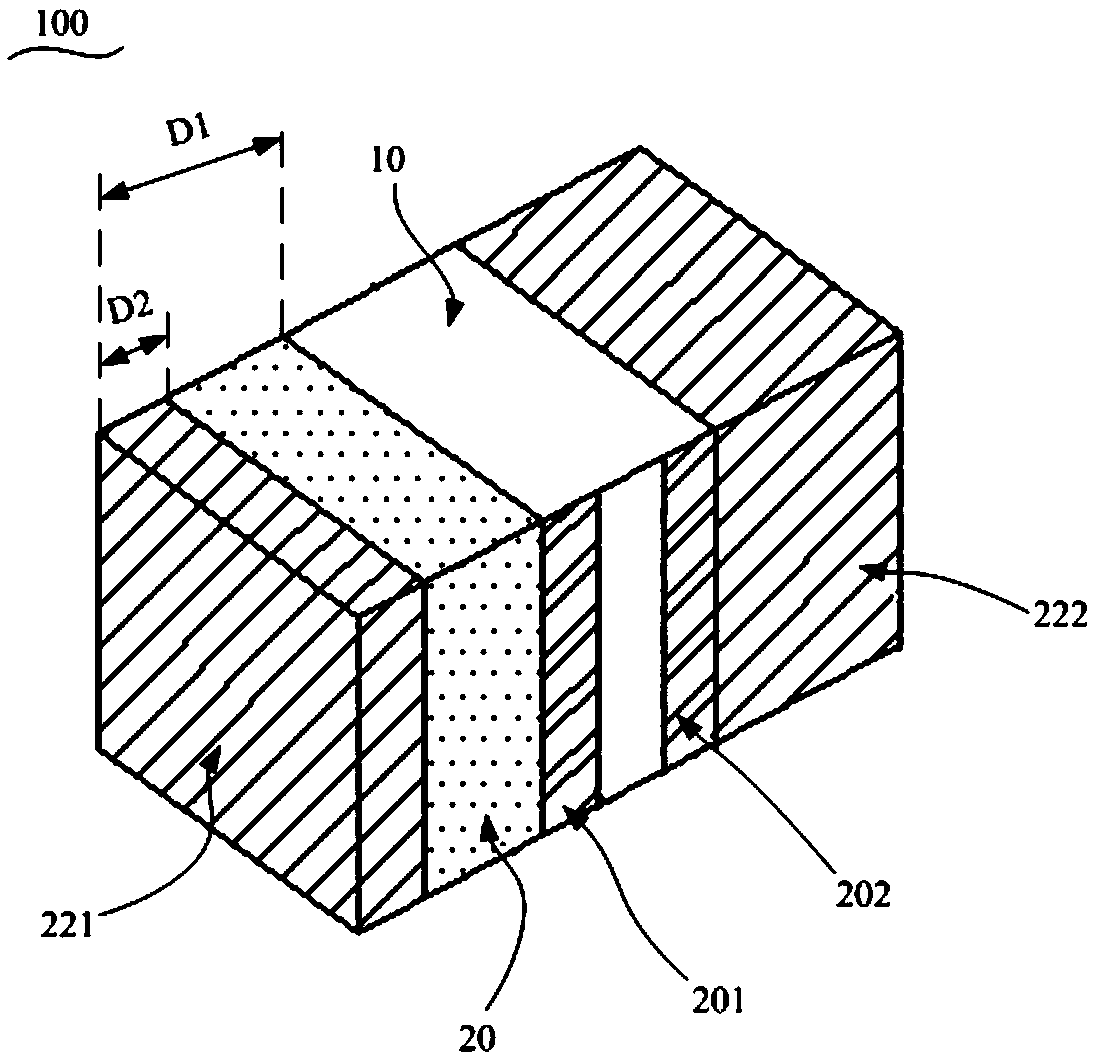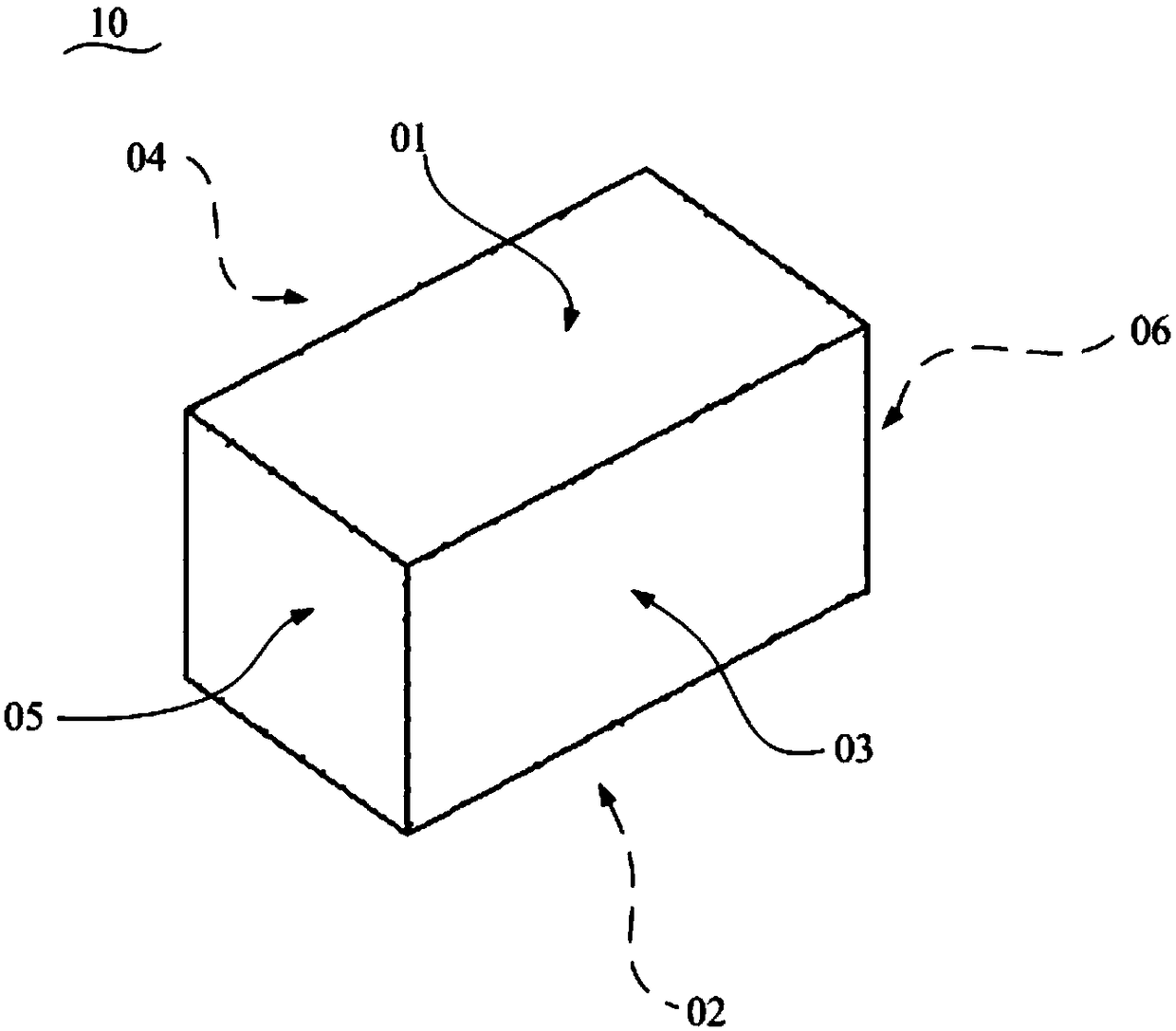Composite electronic component and its preparation method
A technology of electronic components and electrode layers, applied in the direction of electrical components, circuits, capacitors, etc., can solve problems such as low placement efficiency, unfavorable miniaturization of the whole machine, and multi-circuit space
- Summary
- Abstract
- Description
- Claims
- Application Information
AI Technical Summary
Problems solved by technology
Method used
Image
Examples
preparation example Construction
[0073] The flowchart of the preparation method of the composite electronic component of one embodiment is as follows Figure 17 As shown, the following steps S110-S140 are included.
[0074] S110, providing a ceramic body.
[0075] Wherein, the ceramic body is a cuboid, and the ceramic body has a first main surface and a second main surface opposite to each other, a first side surface and a second side surface opposite to each other, and a first end surface and a second end surface opposite to each other. The inside of the ceramic body is filled with a ceramic medium, and a plurality of first electrode layers and a plurality of second electrode layers are interspersed in the ceramic medium, and the first electrode layers and the second electrode layers are alternately stacked, and the first electrode layers are on the second electrode layers The projection of has an overlapping portion with the second electrode layer. A ceramic medium is filled between the first electrode la...
Embodiment 1
[0121] Preparation of composite electronic components
[0122] 1) Preparation of a ceramic body: ceramic powder, a binder and an organic solvent are mixed to obtain a ceramic slurry, and a plurality of ceramic dielectric films are formed by casting the ceramic slurry as a raw material. Wherein, the ceramic slurry includes 10 parts of ceramic powder, 4 parts of binder and 5 parts of organic solvent in parts by mass. The ceramic powder is barium titanate ceramics, the binder is polyvinyl butyral, and the organic solvent is a mixed solvent of toluene and ethanol with a ratio of parts by mass of 1:1. The electrode paste is printed on a plurality of ceramic dielectric films to respectively obtain a ceramic dielectric film printed with a first electrode layer and a ceramic dielectric film printed with a second electrode layer. The screen pattern of the first electrode layer and the second electrode layer is as Figure 19 As shown, the shaded part indicates where the electrode past...
Embodiment 2
[0128] The preparation method of the composite electronic component of this embodiment is similar to that of Embodiment 1, the difference is that in the preparation of the ceramic body, the electrode paste is printed on a plurality of ceramic dielectric films, and the ceramic dielectric film and the ceramic dielectric film printed with the first electrode layer are respectively obtained. In the operation of printing the ceramic dielectric film with the second electrode layer, the screen pattern of the first electrode layer and the second electrode layer is screen printed as Figure 20 As shown, the shaded part indicates where the electrode paste is printed. When the side electrodes are formed on the ceramic body, the first electrode layer is electrically connected to the first connection electrode and the second connection electrode, and the second electrode layer is electrically connected to the third connection electrode and the fourth connection electrode.
[0129] The spec...
PUM
 Login to View More
Login to View More Abstract
Description
Claims
Application Information
 Login to View More
Login to View More - R&D
- Intellectual Property
- Life Sciences
- Materials
- Tech Scout
- Unparalleled Data Quality
- Higher Quality Content
- 60% Fewer Hallucinations
Browse by: Latest US Patents, China's latest patents, Technical Efficacy Thesaurus, Application Domain, Technology Topic, Popular Technical Reports.
© 2025 PatSnap. All rights reserved.Legal|Privacy policy|Modern Slavery Act Transparency Statement|Sitemap|About US| Contact US: help@patsnap.com



